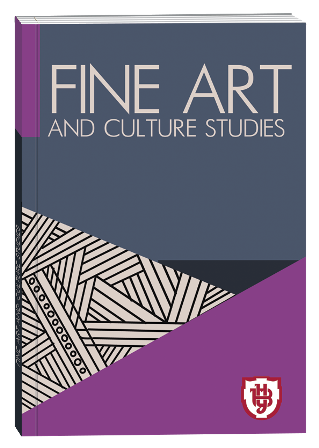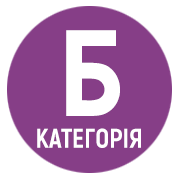CONTEMPORARY DANCE AS A SOCIO-CULTURAL PHENOMENON: A COMBINATION OF SPIRITUAL VALUES AND CREATIVE FORMS OF LEISURE
DOI:
https://doi.org/10.32782/facs-2025-2-34Keywords:
modern dance, choreography, socio-cultural functions, spiritual values, creative, leisureAbstract
The European choice for the development of Ukrainian society implies realizing a new role for contemporary dance.Time demands a rethinking of the socio-cultural functions of dance, its artistic and aesthetic features, and therapeutic possibilities for creating creative forms of leisure in the socio-cultural space of Ukraine.The article aims to analyze the artistic, aesthetic, spiritual, and psychological features of understanding the stylistic, genre, and aesthetic, and socio-cultural specifics of contemporary dance in the context of modernization transformations in Ukraine. The realization of the goal is achieved through the solution of the following objectives: 1) to reveal the essence and concept of contemporary dance as a multifaceted socio-cultural phenomenon of universal action 2) to study the therapeutic effect of contemporary dance in the context of harmonizing personal development and the exchange of cultural values of social groups among themselves 3) to determine the peculiarities of cultural meanings and symbols of contemporary dance culture in the context of combining spiritual values and new creative forms of leisure to reproduce cultural values.The research methodology is based on a combination of cultural and art history approaches to analyzing the socio- cultural and artistic and aesthetic nature of dance, and a psychological perspective was also useful in understanding the therapeutic possibilities of dance practices.Scientific novelty. The article examines the set of characteristics and differences in the understanding of contemporary dance and its use in modern forms of socio-cultural activity in Ukraine.As a conclusion, the article emphasizes that dance has always attracted the attention of researchers from various schools and trends, physiologists, and scientists in the field of psychology and pedagogy. Dance can be defined as a socio- cultural phenomenon in which particularly significant psychoplastic intonations of society are expressed and social motives are reflected. Dance is a whole complex of non-verbal signs and signals that carry information about the psychological characteristics of an individual and a group. The reason for the therapeutic effect of dance lies in the importance of rhythm, the main and defining element of dance that affects the human soul. Dance is a model not only of the social system, but also of the value and normative matrix of the development of an individual. This understanding opens up new perspectives in the organization of new creative forms of cultural and leisure activities in Ukraine.
References
Бойко О.С. Танцтеатр у межах традицій експресіоністського хореографічного мистецтва. Вісник Національної академії керівних кадрів культури і мистецтв. 2018. № 1. С. 134–138. URL : http://nbuv.gov.ua/UJRN/vdakkkm_2018_1_28 (05.03.2025).
Герц І. І. Танець як засіб засвоєння соціокультурного досвіду. Вісник Національної академії керівних кадрів культури і мистецтв : наук. журнал. 2021. № 2. С. 199–204.
Гриценюк Р. Соціальні танці в соціокультурному просторі ХХІ ст.: спортивно-змагальний аспект. Мистецтвознавчі записки : зб. наук. праць. 2020. Вип. 38. С. 79–84.
Кінезіологія танцю: колективна монографія / за заг. ред. О.А. Плахотнюка. Львів : Сполом, 2020. 244 с.
Савчин Л. М., Годовський В.М. Методика роботи з хореографічним колективом: навчально-методичний посібник для студентів спеціальності «Хореографія». Рівне, 2012. 352 с.
Плахотнюк О. Етносвітогляд фольклорного танцю в мистецькому просторі сучасності. Актуальні питання гуманітарних наук: міжвузівський зб.наук. пр. молодих вчених Дрогобицького державного педагогічного університету імені Івана Франка. Дрогобич : Видавничий дім «Гельветика», 2021. Вип. 35. Том 5. С. 4–8. URL : http:// www.aphn-journal.in.ua/35-5-2021 (20.03.2025).
Шабаліна О. М. Мова тіла як пластичний вимір ХХ століття. Культура України : Мистецтвознавство. 2015. Вип. 51. С. 182–193. URL : http://nbuv.gov.ua/UJRN/Kum_2015_51_20 (28.03.2025).
Шабаліна О.М. Пластичність. Мова. Тіло : монографія. Київ : ФО-П Поліщук О.В., 2017. 194 с.
Шариков Д. Новітня теорія танцю першої половини ХХ століття за методом Рудольфа фон Лабана. Вісник Львівського університету. Серія мистецтвознавство. 2015. Вип. 16. Ч. 1. С. 195–202.







